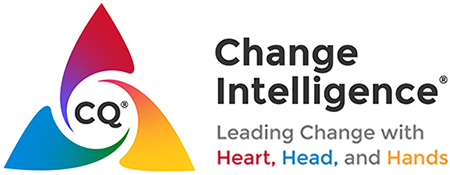Dr. Bridges, a giant in the field of change management, shows us the distinction between “change” (what happens on the “outside” – be it a harrowing tsunami or a hostile take-over) and “transition” (what happens on the “inside” – our psychological and emotional reactions).
As Dr. Bridges demonstrates, transitioning from the old to the new happens in three stages; the Ending, the Neutral Zone, and New Beginnings. As leaders charged with supporting our people through major transitions, how can change intelligence help us as we endeavor to help others move through these phases?
- During the Ending Stage, we need to let go of the past, say goodbye to “the way things have always been done.” Change intelligent leaders start with the “heart,” connecting with people at an emotional level, dealing with feelings of loss (security, status, skills). They then educate the “head,” clarifying the why and what of the change: What is really ending, and why are these changes necessary? What’s the business case, and what’s the implication for me? Helping the “hands” by explaining the specific plan and sharing as much information as possible multiple times through multiple mechanisms lends comfort and some sense of control during this stressful time.
- The Neutral Zone finds us, just like the first ambitious flowers poking up through the still-falling snow here in my hometown near Chicago, hovering between two realities – often confused and feeling caught in “limbo.” In this phase, build on your heartfelt connection with others by sharing your vulnerability: in what ways have you been unsure and even doubting yourself, and how have you overcome your anxiety and gotten back to effective action? Exhibit patience with missed deadlines and off-target efforts – recognize this is a sign that you need to engage the brain by prioritizing new goals and actively listening to unearth barriers people are facing, both in the shifting workplace and within themselves. Talk tactics with people. Change intelligent leaders recognize that they may need to deploy temporary procedures. Providing structure and “hand holding” from an involved, in-the-trenches leader can be invaluable to guide people on the new path. Work alongside people to channel the chaos into creativity, so you can all move from stuck to back in momentum.
- New Beginnings come when the change finally starts to happen. People’s first efforts in a new style are delicate, fragile, and easily injured. It is a leader’s responsibility to protect and nurture. Recognizing small successes and behaviors supporting the new way of working both recognizes people’s efforts as well as clarifies the new expectations for others. Remind people of the purpose of the change and demonstrate to them through anecdotal stories and hard statistical evidence corroborating the soundness of the rationale. Be consistent in rolling out the change and relentless in identifying and remediating systems and actions blocking the transformation that must occur. Involve people as partners in the process – you’ll get actionable feedback, higher quality solutions, and mutual accountability to the team and the change objectives. By approaching the transition process in this way, change intelligence leaders inspire the heart, engage the head, and help the hands toward a brighter future. And, they remember that the three stages are iterative, overlapping, and happen at different times and manifest differently for different people and groups.
While we can’t foresee when the tsunamis of life will hit us, we can prepare ourselves and be of service to others by building our change intelligence, so when the inevitable comes, we’re as ready as we can be. That’s why the most effective change leaders have the self-awareness to adapt their styles to the unique demands of unique individuals and their unique transition experiences.
